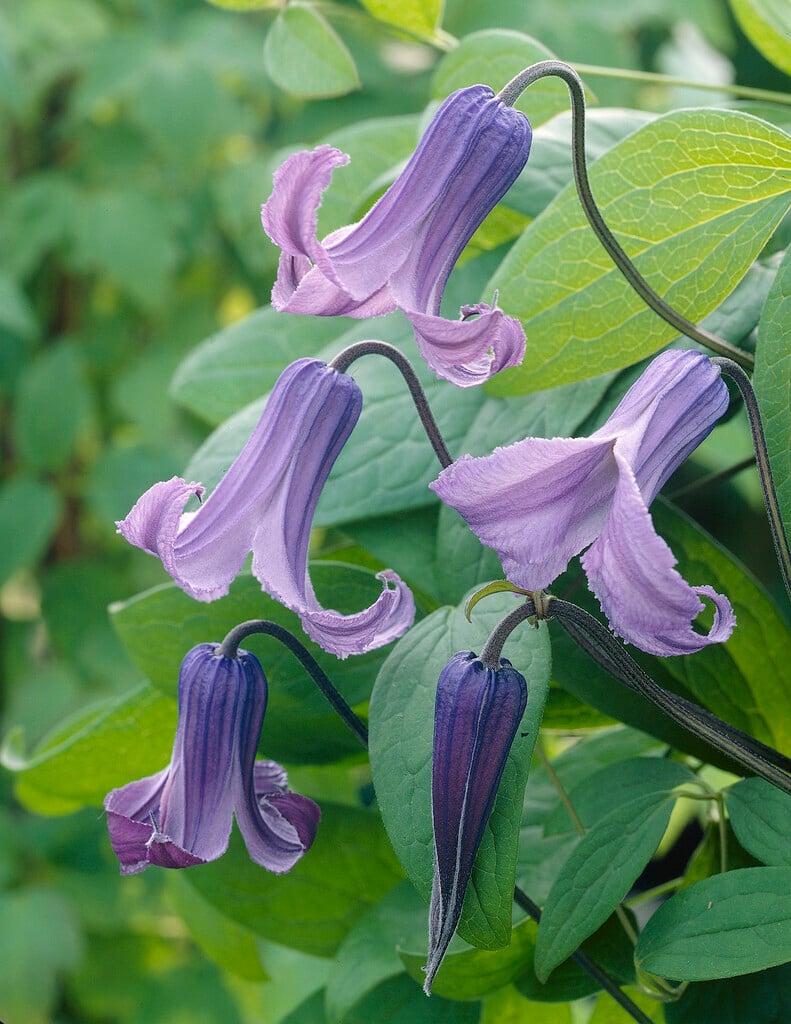Clematis crispa
marsh clematis
A deciduous perennial climber with dark green leaves. Masses of lightly fragranced, bell-shaped nodding pale to violet-blue flowers with crinkled edges appear from summer through until autumn. Also works well as ground cover or scrambling through other plants in a herbaceous border if left unsupported
Synonyms
Clematis simsii Sweet
Buy this plant
Size
Ultimate height
1.5–2.5 metresTime to ultimate height
2–5 yearsUltimate spread
1.5–2.5 metresGrowing conditions
Moisture
Moist but well–drainedpH
Alkaline, NeutralColour & scent
| Stem | Flower | Foliage | Fruit | |
| Spring | Green | |||
|---|---|---|---|---|
| Summer | Purple Blue | Green | ||
| Autumn | Purple Blue | Green | ||
| Winter |
Position
- Full sun
- Partial shade
Aspect
East–facing or South–facing or West–facing
Exposure
Exposed or Sheltered Hardiness
H6Botanical details
- Family
- Ranunculaceae
- Native to GB / Ireland
- No
- Foliage
- Deciduous
- Habit
- Climbing
- Potentially harmful
- Skin irritant. Wear gloves and other protective equipment when handling. Pets (rabbits): Harmful if eaten. For further information and contact numbers regarding pets, see the HTA guide to potentially harmful plants
- Genus
Clematis can be deciduous or evergreen shrubs or herbaceous perennials, mostly climbing by twining leaf-stalks, and often with showy flowers. Some have attractive fluffy seedheads in autumn
- Name status
Correct
- Plant range
- SE US
How to grow
Cultivation
Plant in a moisture-retentive, well-drained soil, with the roots and base of the plant kept cool and shaded by other plants or a layer of pebbles at the base. Plant with the crown 5-8cm deep to encourage shoots to grow from below ground level. Good for ground cover if left to scramble through a border, unsupported. See clematis cultivation
Propagation
Propagate by layering or semi-hardwood cuttings
Suggested planting locations and garden types
- City and courtyard gardens
- Cottage and informal garden
- Climber and wall shrubs
- Flower borders and beds
- Ground cover
- Wall side borders
Pruning
Pests
Diseases
May be susceptible to honey fungus (rarely), clematis wilt and clematis slime flux
Get involved
The Royal Horticultural Society is the UK’s leading gardening charity. We aim to enrich everyone’s life through plants, and make the UK a greener and more beautiful place.